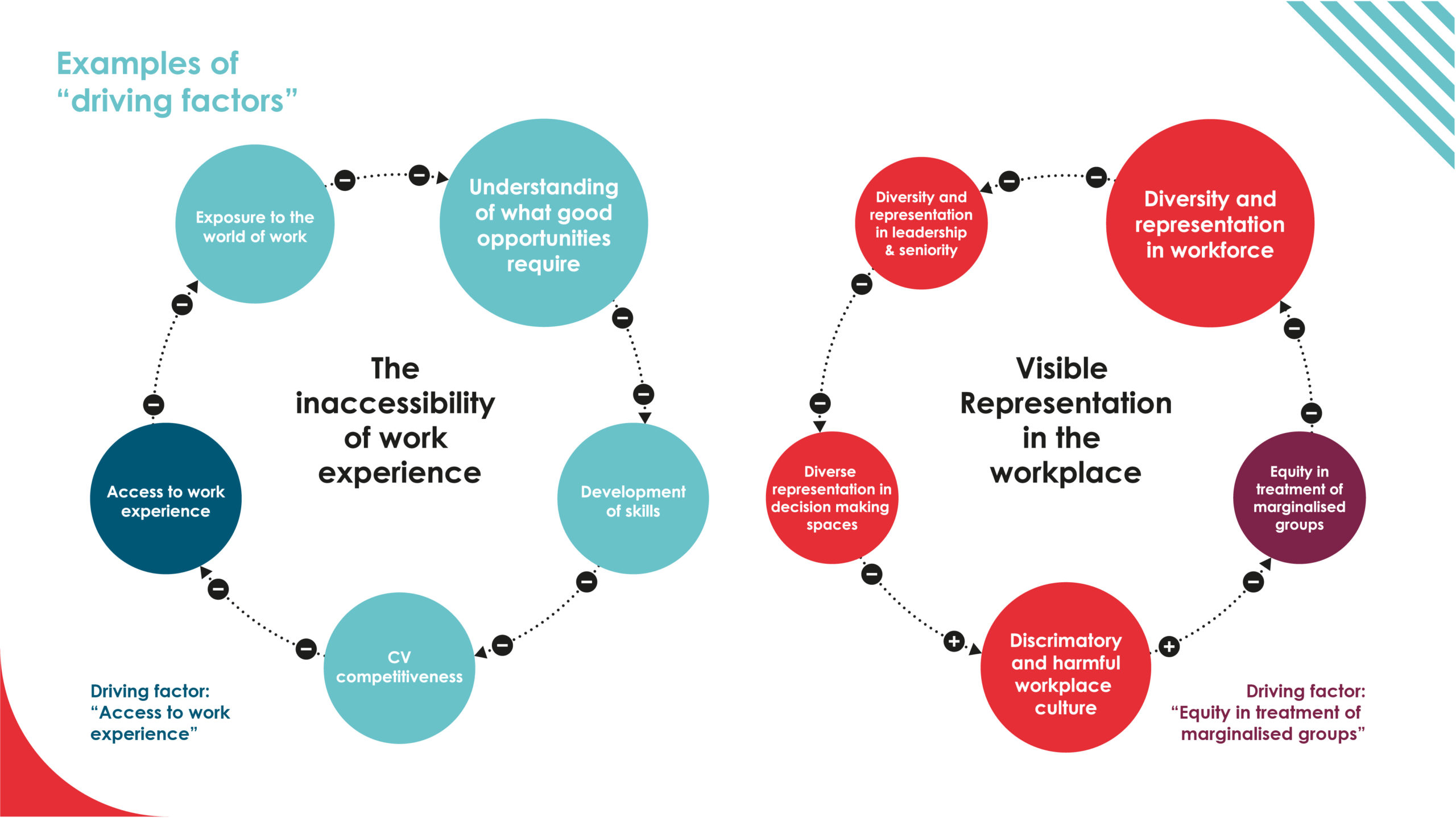Youth Employment Systems Map
The first-ever interactive map of the youth employment system in England, providing a visual representation of the barriers and opportunities young people from marginalised backgrounds face as they seek good jobs.
To help young people from marginalised backgrounds access good work, we need to better understand and improve the way the youth employment “system” works.
This interactive map was the first attempt to visualise the youth employment system in England, helping you explore its complexity.
It is based on research with young people and stakeholders conducted in 2021.
If you haven’t used a system map before, please read below.
The map features six clusters representing issues identified by young people and stakeholders. They allow us to explore specific issues, whilst remaining interconnected across the system.
We have produced two versions of the system map – our ‘interconnected’ version shows how our clusters connect across the system, whilst our ‘clustered’ version separates the themes we’ve found are core issues.
The map is made up of causal loops. These loops tell us a story about a part of the youth employment system. They and connect factors and identify the relationships between the factors – that is, what the consequence of an increase or decrease in one factor might be on the other.

If you are interested in the issues raised by our ‘common experience’ groups of young people, select the group you’re interested in using the bar at the bottom of the map. This highlights the loops representing the important issues and experiences for that group.
When building each causal loop, we identified the factors driving the stories the loops tell us.
These driving factors are a different colour to other factors and provide a good starting point to track the story behind each loop.
Other important factors are those that connect to multiple others – these could be points where investment of resource could most improve outcomes for young people.

It represents the insights of young people and stakeholders involved. It is a rich but imperfect model; a version of the story that helps us understand the youth employment system.
Young people’s perspectives are supported by findings from our research with stakeholders. The map helps all of us to see our position (as “system actors”) within the system, and how we can improve it. There are factors and relationships that are not included in the current version, and we hope to add more.
To identify points where you may have maximum influence, please consider:
We worked with the Social Change Agency to the map based on feedback from:
We chose six themes to guide these conversations:
It represents the insights of young people and stakeholders involved. It is a rich but imperfect model; a version of the story that helps us understand the youth employment system.
If you have any questions, please contact our evidence team.